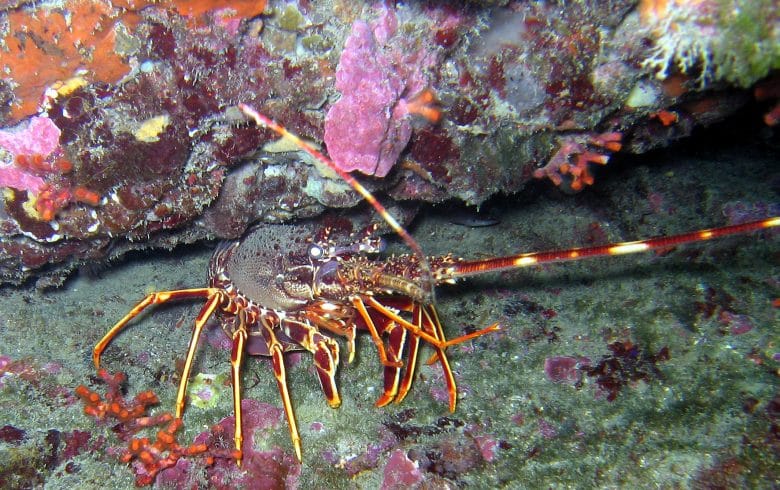
Did you know ?
The spiny lobster moults regularly as it grows. The new carapace that appears underneath the old one is soft and must solidify quickly to protect it from predators.
The spiny lobster has a pair of long, flexible antennae and can be up to 50cm long. It is red-brown in colour with yellow spots and lines, especially on its legs and antennae. It is a nocturnal animal that hides in holes and crevices during the day. Its main prey are shellfish and dead fish. It lives in rock crevices and Posidonia seagrass beds from 10m to 500m below the surface and is found all over the western Mediterranean and in the Atlantic from the British Isles to Mauritania.
Phylum: Arthropoda
Class: Crustacea
Order: Decapoda
Family: Palinuridae
Scientific name: Palinurus elephas
French: Langouste
Spanish: Langosta
Italian: Aragosta
German: Languste






















